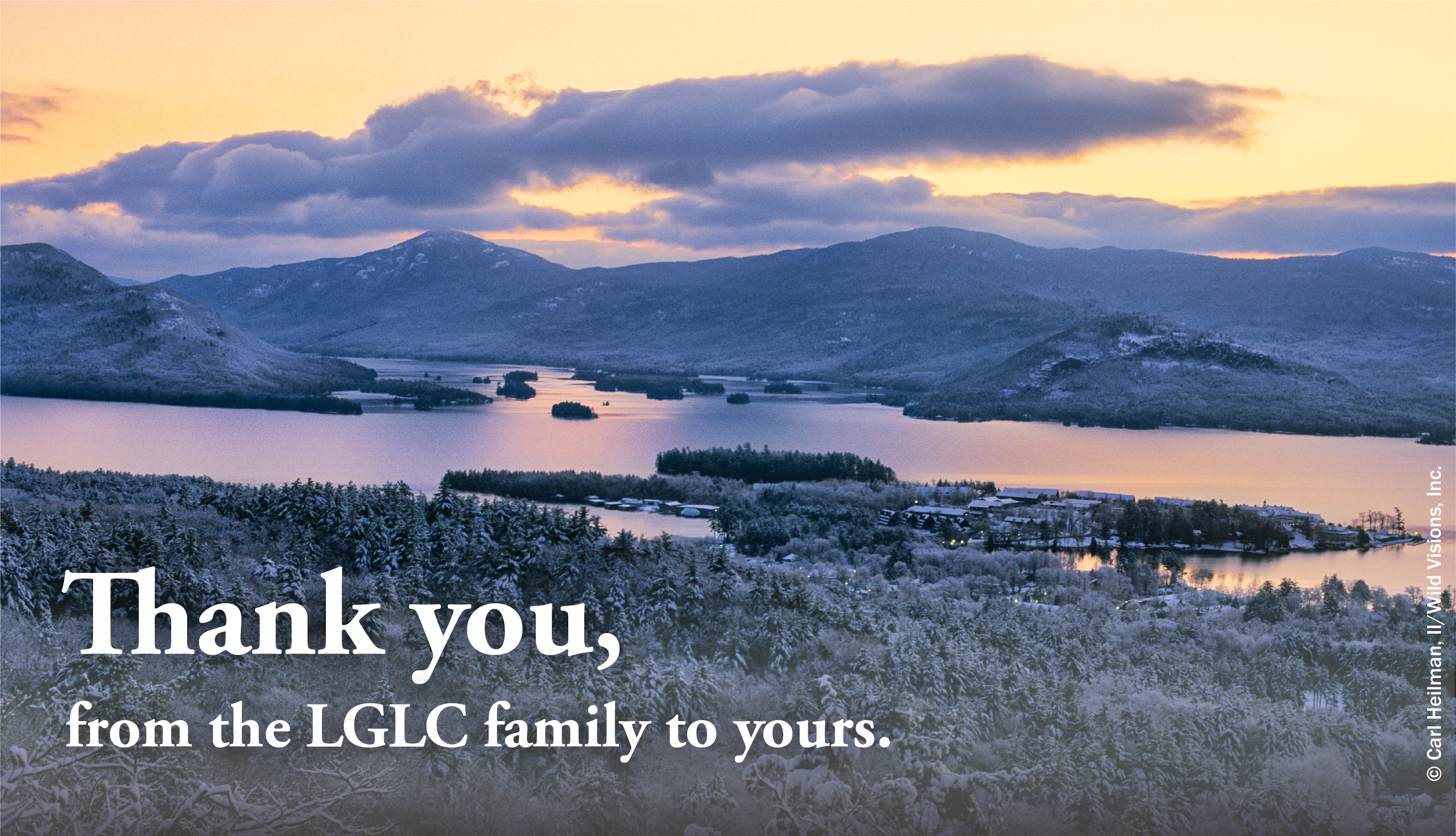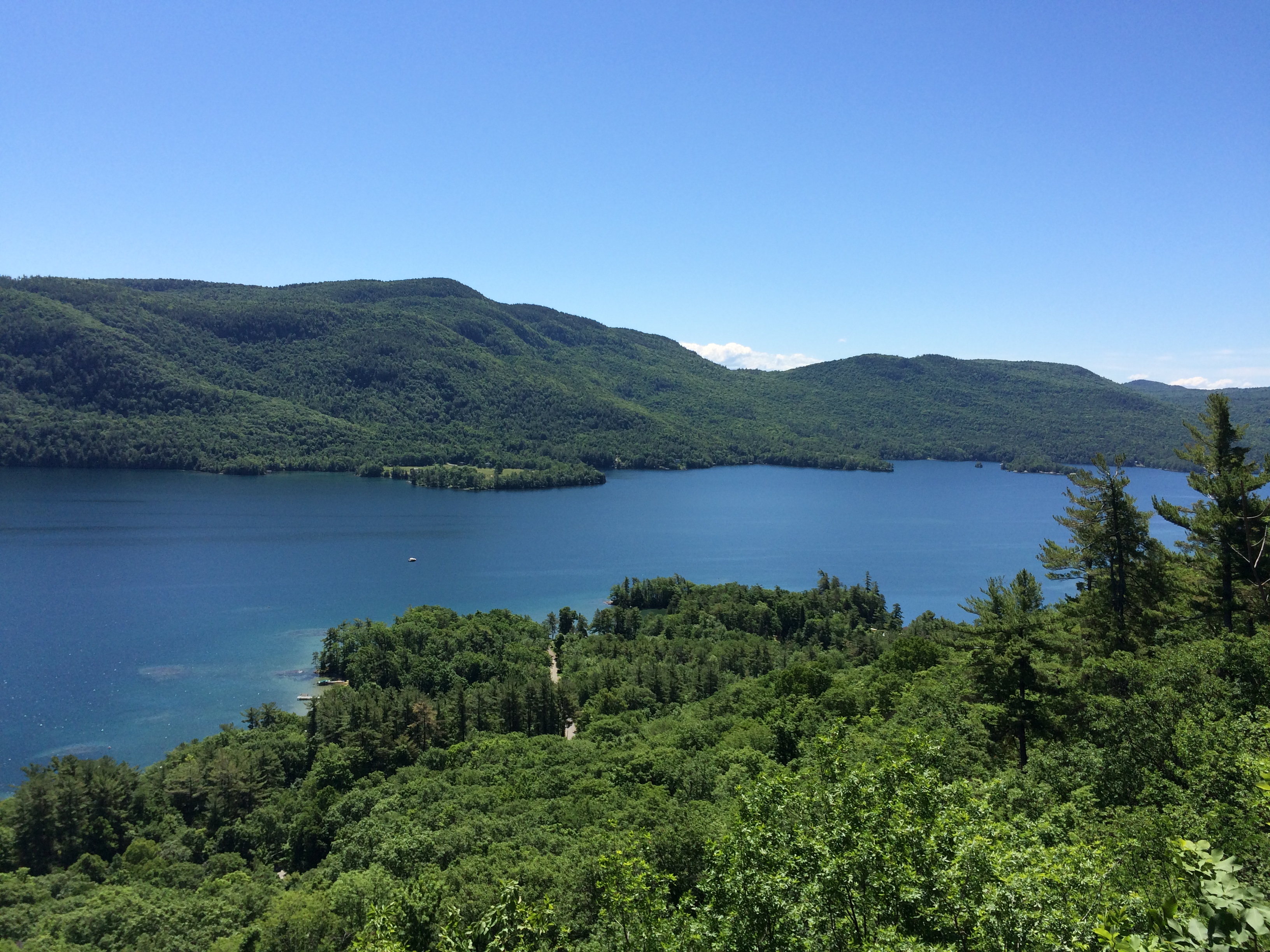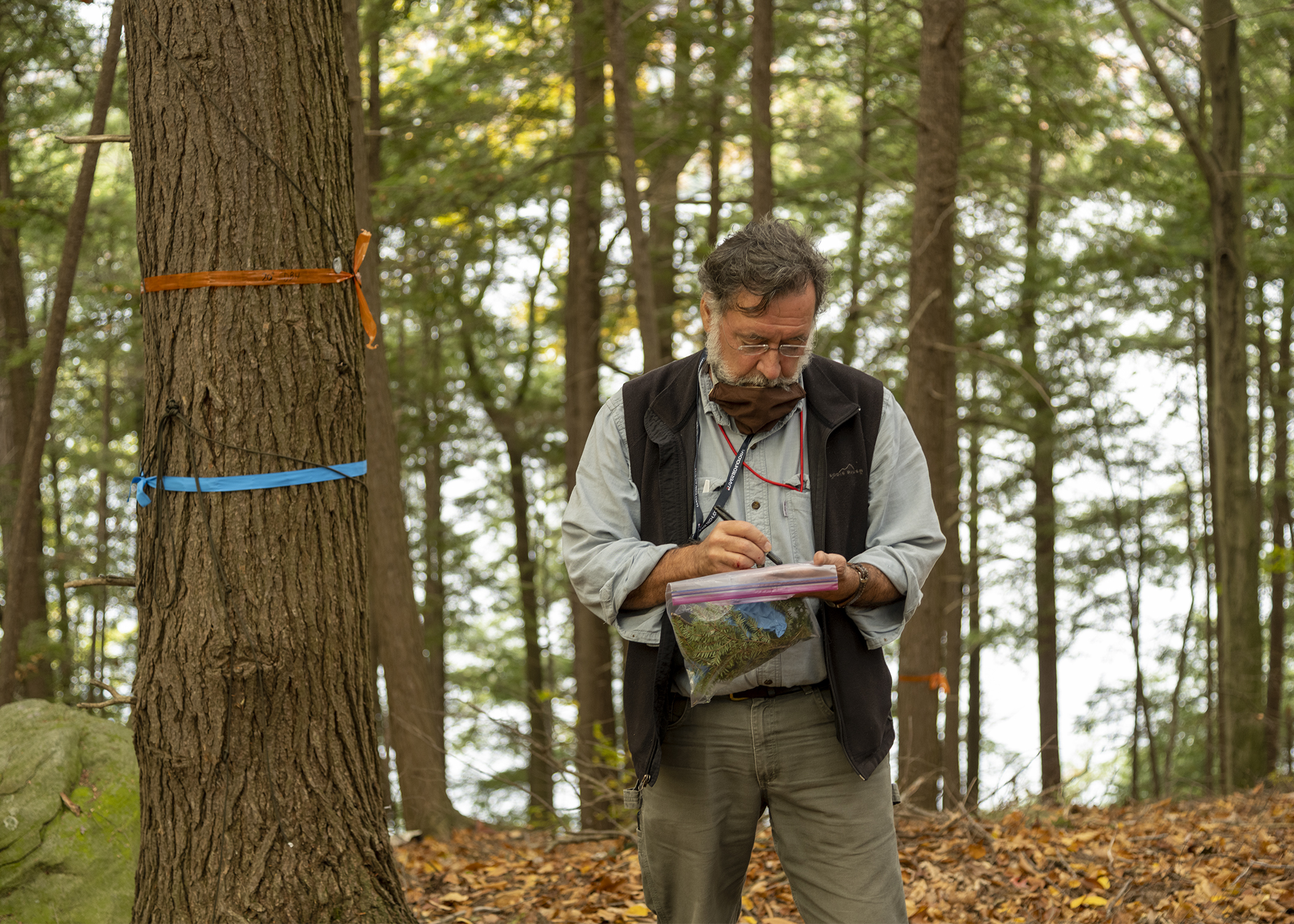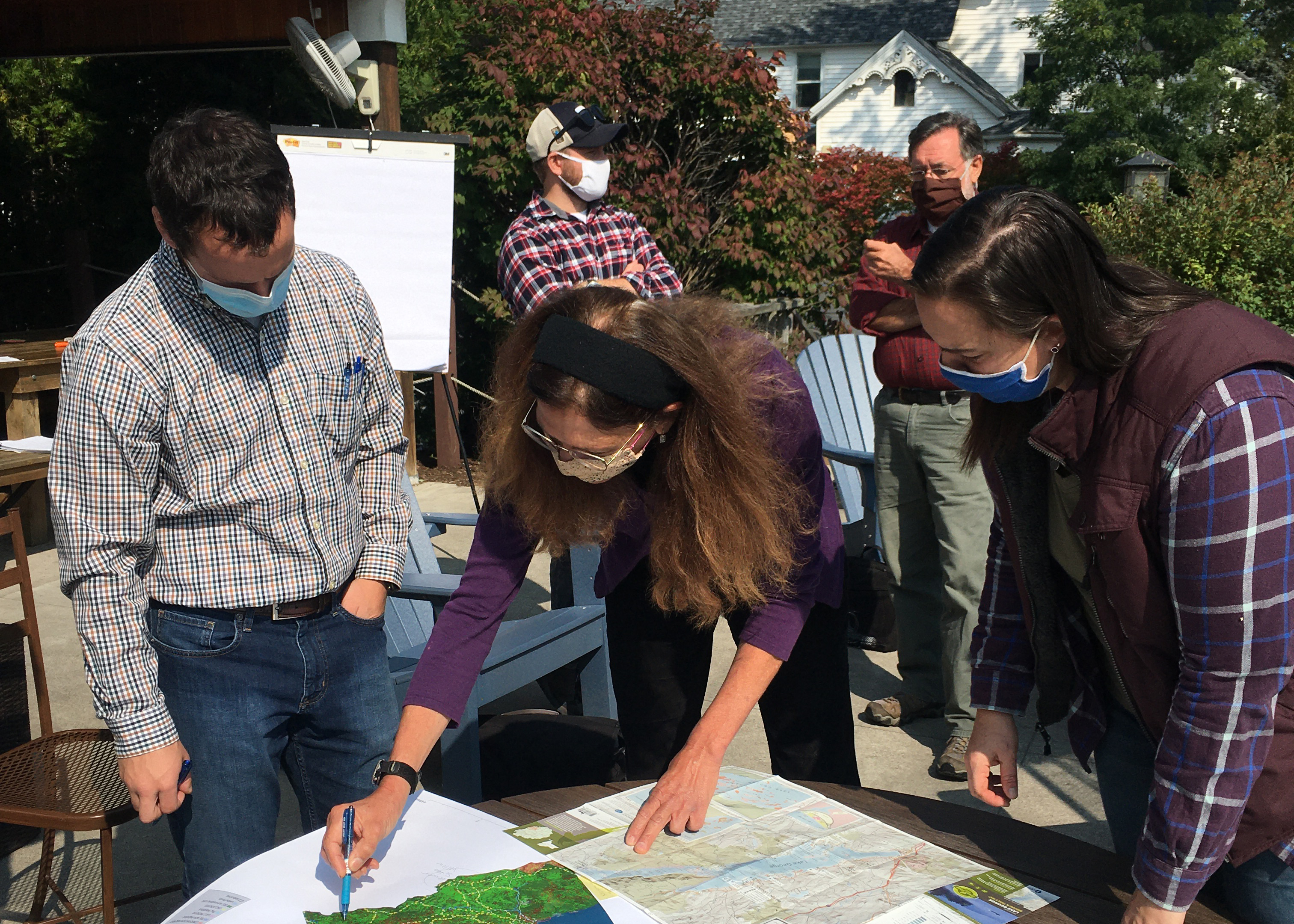|  | LGLC News for November 2020 |
|
|
|  | Through the toughest of times, you have stuck by us and Lake George. The staff and directors of the Lake George Land Conservancy wish to express our sincere gratitude for every dollar, every step on our trails, every mention in conversation, every like and follow online — every action that has helped us carry out our mission to protect Lake George. We are one community. We are Lake George. |
| As we at the LGLC give thanks for an amazing 2020, we look back on all that you helped us to accomplish to protect the land that protects the lake: we protected nearly 300 acres of important land; we, along with our partners, took on the HWA infestation that threatened our precious watershed; we provided safe, nurturing access to nature for thousands of people during a time of uncertainty; we connected more people to our work, the land, and the lake through virtual events and talks. None of this could have happened this year without YOU! From all of us here at the LGLC, thank you for all that you do. |
| Did you know? The CARES Act includes provisions that encourage Americans to contribute to churches and charitable organizations in 2020: - Taxpayers can claim up to $300 for cash donations to charitable organizations on their federal income tax return, even if they do not itemize deductions;
- The 50% adjusted gross income limitation is suspended for cash contributions to charitable organizations by individuals; and
- The 10% limitation for corporations is increased to 25% of taxable income.
Please consult your financial advisor if you have any questions about this or other ways to support LGLC. |
| |
|
|  | Thank you for protecting more than 300 acres of land that protect the lake! Thanks to you, the Lake George Land Conservancy protected three important properties, totaling nearly 300 acres, including 40 acres of critical wetlands, 4,300 feet of stream corridor, and hundreds of acres of forestland. The protection of these lands ensures they will never be altered and will be able to forever continue their natural function of filtering water as it flows into Lake George. - Bradley's Lookout: 62 acres, Bolton
The LGLC purchased this iconic property $526,000, and then immediately sold the land to the Town of Bolton for $150,000 encumbered by a conservation easement to ensure that it would remain protected forever. This partnership not only protected the land’s amazing and easily-viewed ridgeline, wetlands, and beautiful forest, but also allows for the Town of Bolton to create an amazing recreational hub. - Twin Pines: 215 acres, Bolton
With more than 20 acres of wetlands and 3,000 feet of stream corridor, the protection of this property ensures that water flowing into Trout Lake, and on into Lake George, will forever be filtered by the forest, wetlands, and natural processes that have worked throughout time to keep our water pristine. - Fairy Brook Corridor: 25 acres, Dresden
Part of the larger Huletts Landing Conservation Initiative, the purchase of this 25-acre property directly protects water quality by protecting its 1,300 feet of stream corridor. Over the past two years, we have protected more than 3,400 feet of stream corridor with the Initiative area, ensuring that the water flowing through the streams will remain clean forever. |
| |
|
|  | HWA Management: Dome Island Update In October, LGLC staff, Dr. Mark Whitmore (pictured above, photo courtesy NYS DEC) and members of the NYS Hemlock Initiative confirmed the presence of hemlock woolly adlegid (HWA) on Dome Island during a preliminary monitoring visit. The infestation seems to be concentrated to the southern end of the island. The LGLC and our partners at The Nature Conservancy (TNC), NYS Hemlock Initiative, and Adirondack Park Invasive Plant Program (APIPP), once again sprung quickly into action. A field crew returned to Dome Island right away to survey and mark infested trees for treatment, then carefully treated infested hemlocks in early November. Treating the currently infested trees will reduce the spread of HWA to non-infested trees, and hopefully will reduce the amount of resources to be used on the island. We will return to Dome Island next year to continue treatments and see if HWA has spread. Meanwhile, Dome Island's unique ecosystem is being studied for HWA spread, effectiveness of treatment, as well as any impact that treatment may have on the surrounding soils. Again, this research is a collaborative effort between the LGLC and our partners.
Behind the scenes: Even when we are not out in the woods checking hemlock health, HWA is always a priority in the work that we do. This year we strengthened our relationships with partners and together developed a plan to quickly identify and manage future HWA infestations. In addition to contributing staff time in the field, the LGLC provided $25,000 to fund a field crew from Adirondack Research. This field crew worked in the woods for four weeks and searched an additional 300 sites throughout the watershed, looking for additional infestations. Thankfully, this group did not find any other infestations. In addition, LGLC is contributing $3,000 to a project led by APIPP, the FUND for Lake George, and others to undertake remote sensing to study the health of the hemlock stands to search for HWA. Surveying and treatments on partner lands have ended for the year, but the LGLC will be hard at work all winter, looking for HWA on our preserves and hosting several online training events. |
| |
|
|  | Gratitude for Partnerships When the first substantial infestation of HWA was confirmed on State-owned land, it was the DEC that quickly rose to meet the challenge of managing this tiny bug that has the potential to do great harm to our forests. We at the LGLC would like to thank the DEC and its many partners, for their hard work to manage the HWA infestation here in Lake George. All of the DEC personnel, including the decision-makers in Albany, the foresters on the ground, the folks driving the boats, and the people conducting the treatment, were cooperative, knowledgeable, and helpful. It was a real team effort; the partners involved with the survey and treatment, including APIPP, CAPMO, and Dr. Mark Whitmore and his staff from the Hemlock Initiative, were equally professional, knowledgeable and cooperative. All of us spent a many days together, learned a great deal from each other, and forged some strong relationships. We greatly appreciate the leadership that the DEC provided, and the hard work, time, and effort that all of the partnership organizations provided this summer. We also look forward learning more about the work of APIPP, CUNY, Adirondack Research, and the Fund for Lake George, related to remote sensing tools to monitor the health of hemlocks that may help with the fight against HWA. This is only the beginning of a long term effort to protect our watershed against HWA. Together, we can work to keep our forests and lake healthy for the next generation. |
|
|
| | | | Lake George Land Conservancy
4905 Lake Shore Dr., PO Box 1250 | Bolton Landing, New York 12814
518-644-9673 | giving@lglc.org |
| |
|
| |
|
|